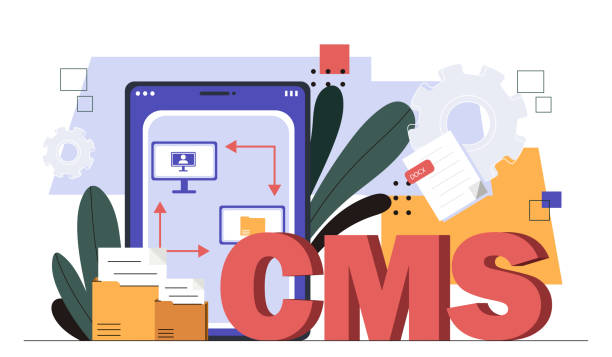What Exactly is Web Development? A Comprehensive Guide to Building the Digital World

In an era dominated by digital interaction, the internet has become the primary conduit for information, commerce, communication, and entertainment. Behind every website, every application, and every digital experience lies a fascinating and complex discipline: Web Development. Far more than just coding, it’s the art and science of bringing ideas to life on the internet, crafting the interactive spaces where we work, learn, and play.
If you’ve ever wondered what goes into creating a website, how it adapts to your phone, or what the difference is between a frontend and a backend developer, you’re in the right place. This comprehensive guide will demystify web development, breaking down its core components, processes, vital concepts like Responsive Design, and the code languages that form its very foundation.
The Foundation: Understanding the Digital Ecosystem
At its heart, web development is about building and maintaining websites and web applications. This encompasses everything from a single static page of plain text to complex social networks, e-commerce platforms, and interactive gaming experiences. The digital ecosystem is vast, relying on a delicate interplay of technologies to deliver content seamlessly across the globe.
Think of web development as constructing a building:
- Architecture (Design): Planning the layout, user experience, and visual aesthetics.
- Foundation & Structure (Frontend): The visible parts – walls, windows, doors – that users interact with.
- Utility Systems (Backend): The unseen infrastructure – plumbing, electricity, security – that makes the building functional.
- Land (Hosting): The server space where the website lives.
- Roads (Internet Protocols): The network that allows users to access the building.
Let’s delve deeper into these fundamental layers.
The Two Pillars of Web Development: Frontend vs. Backend
Web development is broadly categorized into two major areas: Frontend Development and Backend Development. Understanding this distinction is crucial to grasping how websites function.
1. Frontend Development: The User’s Experience
Frontend development, also known as client-side development, is all about what users see and interact with in their web browser. It’s the visual and interactive layer of an application, meticulously crafted to ensure an engaging and intuitive user experience. Imagine the vibrant colors, the clickable buttons, the smooth animations, and the way a website adjusts perfectly to your phone screen – that’s the work of a frontend developer.
The primary languages and technologies used in frontend development are:
- HTML (HyperText Markup Language): The Structure HTML is the backbone of any web page. It’s not a programming language but a markup language used to define the structure and content of a web page. It tells the browser what is a heading, a paragraph, a list, an image, or a link.Example HTML Structure:
<!DOCTYPE html> <html lang="en"> <head> <meta charset="UTF-8"> <meta name="viewport" content="width=device-width, initial-scale=1.0"> <title>My Awesome Website</title> <link rel="stylesheet" href="styles.css"> <!-- Links to our CSS file --> </head> <body> <header> <h1>Welcome to Our Digital Space</h1> <nav> <ul> <li><a href="#home">Home</a></li> <li><a href="#about">About Us</a></li> <li><a href="#contact">Contact</a></li> </ul> </nav> </header> <main> <section id="home"> <h2>Discover Innovation</h2> <p>This is a paragraph introducing our amazing services.</p> <button id="learnMoreBtn">Learn More</button> </section> <section id="about"> <h2>Our Story</h2> <img src="team.jpg" alt="Our Team" style="max-width:100%;"> <p>We are a passionate team dedicated to crafting exceptional web experiences.</p> </section> </main> <footer> <p>© 2023 My Awesome Website. All rights reserved.</p> </footer> <script src="script.js"></script> <!-- Links to our JavaScript file --> </body> </html>In this example,
<h1>,<p>,<ul>,<li>,<a>,<button>,<img>, etc., are HTML tags that instruct the browser on how to structure the content. - CSS (Cascading Style Sheets): The Styling If HTML provides the structure, CSS provides the style. It dictates how the HTML elements should look – their colors, fonts, spacing, layout, and overall visual presentation. CSS is crucial for making a website aesthetically pleasing and user-friendly. Importantly, it’s also the primary tool for implementing Responsive Design.Example CSS Styling:
/* Basic Global Styles */ body { font-family: 'Segoe UI', Tahoma, Geneva, Verdana, sans-serif; margin: 0; padding: 0; background-color: #f8f8f8; color: #333; } /* Header Styling */ header { background-color: #007bff; color: white; padding: 20px; text-align: center; } header h1 { margin: 0; } /* Navigation Styling */ nav ul { list-style: none; padding: 0; display: flex; /* Using Flexbox for navigation items */ justify-content: center; } nav ul li { margin: 0 15px; } nav a { color: white; text-decoration: none; font-weight: bold; } /* Section Styling */ section { padding: 40px 20px; margin-bottom: 20px; background-color: white; box-shadow: 0 2px 4px rgba(0,0,0,0.1); border-radius: 8px; } /* Button Styling */ #learnMoreBtn { background-color: #28a745; color: white; border: none; padding: 10px 20px; border-radius: 5px; cursor: pointer; font-size: 16px; transition: background-color 0.3s ease; } #learnMoreBtn:hover { background-color: #218838; } /* Responsive adjustments will go here (covered later) */ - JavaScript: The Interactivity JavaScript is the programming language that breathes life into static web pages. It enables interactive features like dynamic content updates, animations, form validation, complex user interface behaviors (e.g., dropdown menus, image sliders), and much more. Without JavaScript, most modern web applications would simply not exist.Example JavaScript for Interactivity:
// Get a reference to the button element const learnMoreButton = document.getElementById('learnMoreBtn'); // Add an event listener to the button learnMoreButton.addEventListener('click', function() { alert('Thank you for your interest! We are glad you want to learn more.'); // In a real application, this might expand a section, load new content, etc. const aboutSection = document.getElementById('about'); if (aboutSection.style.display === 'none' || aboutSection.style.display === '') { aboutSection.style.display = 'block'; aboutSection.scrollIntoView({ behavior: 'smooth' }); // Scroll to the section } else { aboutSection.style.display = 'none'; } }); // You can also add more complex logic, like fetching data from an API // fetch('https://api.example.com/data') // .then(response => response.json()) // .then(data => console.log(data)) // .catch(error => console.error('Error:', error));
Beyond these core languages, frontend developers often use frameworks and libraries like React, Angular, and Vue.js to build complex user interfaces more efficiently, along with build tools and package managers.
2. Backend Development: The Server’s Logic
Backend development, or server-side development, is the engine room of a website. It deals with the “behind-the-scenes” logic, data processing, database interactions, user authentication, and server management. Whenever you fill out a form, log in, or retrieve information, the backend is working tirelessly to process that request, interact with the database, and send the appropriate data back to the frontend. Users don’t directly see the backend, but its robust functioning is critical for the website’s performance and security.
Key components and technologies in backend development include:
- Programming Languages:
- Python: (with frameworks like Django, Flask) Known for its readability and versatility.
- Node.js: (JavaScript runtime with frameworks like Express.js) Allows JavaScript to be used on the server side, enabling full-stack JavaScript development.
- PHP: (with frameworks like Laravel, Symfony) Powers a large portion of the web, especially content management systems like WordPress.
- Ruby: (with the Ruby on Rails framework) Famous for its developer-friendly conventions and rapid development capabilities.
- Java: (with frameworks like Spring) Widely used in enterprise-level applications due to its scalability and robustness.
- C#: (with ASP.NET Core) Microsoft’s powerful language often used for Windows-based applications and cloud services.
- Databases: Databases are where all the website’s data is stored.
- Relational Databases (SQL): Store data in structured tables with predefined schemas. Examples include MySQL, PostgreSQL, SQL Server, and Oracle. They are excellent for complex queries and maintaining data integrity.
- Non-Relational Databases (NoSQL): Offer more flexible schemas and are often preferred for large-scale, distributed data storage. Examples include MongoDB (document-based), Cassandra (column-family), and Redis (key-value).
- APIs (Application Programming Interfaces): APIs are sets of rules that allow different software applications to communicate with each other. The backend often exposes APIs that the frontend can use to request and send data. RESTful APIs are a very common standard for web services.
- Servers: These are powerful computers that host websites and web applications, serving content to users upon request. Web servers (like Apache, Nginx) handle HTTP requests, while application servers (often integrated with frameworks) run the backend code.
Full-Stack Development: The Bridge
A Full-Stack Developer is proficient in both frontend and backend technologies. They possess the skills to work across the entire web stack, from designing user interfaces to managing databases and server logic. This versatility allows them to oversee a project from concept to deployment, making them highly valuable assets in many development teams.
The Web Development Process: From Idea to Live Website
Building a website is a structured process involving several distinct phases:
- Planning and Discovery: This initial phase involves understanding the project’s goals, target audience, and functional requirements. What problem will the website solve? Who is it for? What features are essential? This often includes market research and competitive analysis.
- Design (UI/UX):
- User Experience (UX) Design: Focuses on making the website intuitive, efficient, and enjoyable to use. This involves wireframing (skeletal layouts) and prototyping (interactive models).
- User Interface (UI) Design: Focuses on the aesthetic aspects – the visual look and feel, including colors, typography, imagery, and overall branding.
As Joe Sparano wisely said, “Good design is obvious. Great design is transparent.” The goal is a design that is so intuitive, users barely notice it, allowing them to focus on their tasks.
- Development (Coding): This is where developers write the actual code.
- Frontend Development: Bringing the UI/UX designs to life using HTML, CSS, and JavaScript, ensuring cross-browser compatibility and, crucially, Responsive Design.
- Backend Development: Building the server-side logic, setting up databases, and creating APIs for communication between the frontend and backend.
- Testing: Before launch, the website undergoes rigorous testing to identify and fix bugs, ensure functionality, performance, and security.
- Unit Testing: Individual components/functions are tested.
- Integration Testing: Different parts of the system are tested together.
- End-to-End Testing: Simulating user scenarios to test the entire application flow.
- Performance Testing: Checking speed and scalability.
- Security Testing: Identifying vulnerabilities.
- Usability Testing: Gathering feedback from real users.
- Deployment: Once thoroughly tested, the website is deployed to a server, making it accessible to the public via the internet. This involves configuring servers, managing domains, and setting up cloud services.
- Maintenance and Updates: Websites are living entities. Post-launch, ongoing maintenance is necessary, which includes bug fixes, security updates, feature enhancements, and performance monitoring.
Key Concepts and Modern Trends in Web Development
The web development landscape is constantly evolving. Staying current with emerging technologies and best practices is essential.
Responsive Web Design (RWD): A Critical Necessity
In today’s multi-device world, users access websites from an astonishing array of screens – desktops, laptops, tablets, smartphones, and even smartwatches. Responsive Design is not merely a trend; it’s a fundamental requirement for delivering a consistent, optimal, and accessible user experience across this myriad of devices.
What is Responsive Design? Responsive Web Design is an approach to web design and development that aims for optimal viewing and interaction experience—easy reading and navigation with a minimum of resizing, panning, and scrolling—across a wide range of devices (from desktop computer monitors to mobile phones). It involves creating fluid and flexible layouts that adapt to the screen size and orientation of the device being used.
Why is Responsive Design Crucial?
- Enhanced User Experience: A website that looks good and functions well on any device provides a seamless and satisfying experience, reducing bounce rates and increasing engagement.
- Improved SEO (Search Engine Optimization): Google and other search engines favor mobile-friendly websites. A responsive site signals to search engines that it offers a good user experience, which can lead to higher rankings in search results, especially for mobile searches.
- Cost-Effectiveness: Maintaining a single responsive website is typically more efficient and less costly than developing and maintaining separate websites or apps for different devices.
- Future-Proofing: The proliferation of new devices and screen sizes means a responsive approach ensures your website remains relevant and accessible for years to come.
- Wider Reach: By catering to all devices, you broaden your potential audience significantly.
How is Responsive Design Achieved? The core principles and techniques behind responsive design include:
- Fluid Grids (Flexible Layouts): Instead of fixed-width layouts in pixels, responsive designs use relative units like percentages (e.g.,
width: 100%;orwidth: 50%;) for elements and columns. This allows the layout to stretch or shrink seamlessly with the viewport size. - Flexible Images and Media: Images and other media (videos, iframes) are scaled dynamically to fit their container. This is typically achieved with
max-width: 100%;andheight: auto;in CSS. - Media Queries: This is the cornerstone of responsive design. Media queries are CSS rules that allow you to apply different styles based on the characteristics of the device, such as screen width, height, resolution, and orientation.Example Media Query Implementation:
/* Default styles for all devices (often mobile-first) */ .container { width: 100%; /* Full width on smaller screens */ padding: 15px; background-color: #e0f7fa; color: #004d40; margin-bottom: 20px; box-sizing: border-box; /* Include padding in width */ } .card-grid { display: flex; flex-direction: column; /* Stack cards vertically by default */ gap: 20px; } .card { background-color: white; padding: 20px; border-radius: 8px; box-shadow: 0 4px 8px rgba(0,0,0,0.1); } /* Media query for screens wider than 600px (e.g., tablets) */ @media (min-width: 600px) { .container { width: 90%; /* Narrower on tablets */ margin: 0 auto; background-color: #c8e6c9; color: #1b5e20; } .card-grid { flex-direction: row; /* Arrange cards horizontally */ flex-wrap: wrap; /* Allow cards to wrap to next line */ justify-content: space-around; } .card { flex: 1 1 45%; /* Allow cards to grow/shrink, base width 45% */ max-width: 45%; /* Max width on larger screens */ } } /* Media query for screens wider than 992px (e.g., desktops) */ @media (min-width: 992px) { .container { width: 70%; /* Even narrower on large desktops */ background-color: #bbdefb; color: #0d47a1; } .card { flex: 1 1 30%; /* Base width 30% for three columns */ max-width: 30%; } }In this example, the
.containerand.card-gridadapt their layout and styling based on the viewport width, demonstrating how a site can fluidly transform. Themeta viewporttag in HTML (<meta name="viewport" content="width=device-width, initial-scale=1.0">) is also crucial; it instructs the browser to set the viewport width to the device’s width and scale it 1:1, preventing mobile browsers from rendering the page at a desktop width.
Mobile-First Approach: A modern best practice is “mobile-first” design. This means designing and developing for the smallest screen size first (mobile devices) and then progressively enhancing the layout and features for larger screens. This approach forces developers to prioritize content and performance, leading to leaner code and better experiences across the board.
Other Important Concepts:
- Performance Optimization: Users expect fast-loading websites. Techniques like image optimization, code minification, lazy loading, and efficient server-side caching are vital for improving load times and user satisfaction.
- Security: Protecting user data and preventing malicious attacks is paramount. This involves using HTTPS, input validation, secure authentication methods, and regular security audits.
- Accessibility (A11y): Ensuring websites are usable by everyone, including people with disabilities. This involves semantic HTML, ARIA attributes, keyboard navigation, and clear color contrasts. As Tim Berners-Lee, the inventor of the World Wide Web, stated, “The power of the Web is in its universality. Access by everyone regardless of disability is an essential aspect.”
- Version Control (Git/GitHub): Tools like Git allow developers to track changes in code, collaborate effectively, and revert to previous versions if needed. GitHub, GitLab, and Bitbucket are popular platforms for hosting Git repositories.
- Cloud Computing: Services like Amazon Web Services (AWS), Microsoft Azure, and Google Cloud Platform (GCP) provide scalable infrastructure for hosting and running web applications, offering flexibility and cost-efficiency.
- DevOps and CI/CD: DevOps culture emphasizes collaboration between development and operations teams. Continuous Integration (CI) and Continuous Deployment (CD) automate the process of building, testing, and deploying code, accelerating development cycles.
- Progressive Web Apps (PWAs): Web applications that offer an app-like experience, including offline capabilities, push notifications, and home screen installation, blurring the lines between native apps and websites.
- JAMstack: A modern web development architecture based on JavaScript, APIs, and Markup, focusing on pre-built content, high performance, and enhanced security.
Types of Web Developers: A Specialized Workforce
The complexity of web development has led to various specializations. Here’s a table outlining some common roles:
| Role | Primary Focus | Key Technologies/Skills |
|---|---|---|
| Frontend Developer | User interface, user experience, visual elements, client-side logic | HTML, CSS (Responsive Design), JavaScript (React, Angular, Vue.js), webpack, npm/yarn |
| Backend Developer | Server logic, databases, APIs, security, data processing | Python (Django, Flask), Node.js (Express), PHP (Laravel), Ruby on Rails, Java (Spring), SQL/NoSQL databases |
| Full-Stack Developer | Both frontend and backend development | All of the above, plus deployment, server management, cloud platforms |
| DevOps Engineer | Bridging development and operations; automation, infrastructure | CI/CD tools (Jenkins, GitLab CI), Cloud platforms (AWS, Azure), Docker, Kubernetes, Linux, scripting |
| UI/UX Designer | User interface (UI) aesthetics, user experience (UX) flow, user research | Figma, Sketch, Adobe XD, Wireframing, Prototyping, User Research, Usability Testing |
| Web Designer | Focus on visual aesthetics and layout, often with some frontend skills | Photoshop, Illustrator, HTML, CSS (layout, styling) |
| QA Engineer / Tester | Ensuring quality, finding bugs, writing test cases | Manual testing, automated testing frameworks (Selenium, Jest, Cypress), bug tracking tools |
This specialization allows teams to tackle large, complex projects efficiently, with each member contributing their expertise.
Tools and Technologies Ecosystem
The modern web development landscape is supported by a rich ecosystem of tools that enhance productivity and streamline workflows:
- IDEs (Integrated Development Environments) / Code Editors: Visual Studio Code, Sublime Text, Atom, WebStorm – provide powerful features for writing, debugging, and managing code.
- Version Control Systems: Git – essential for tracking changes and collaboration.
- Package Managers: npm (Node Package Manager), Yarn – for managing and sharing JavaScript libraries and dependencies. Composer (PHP), Pip (Python), RubyGems (Ruby).
- Build Tools: Webpack, Gulp, Grunt – automate tasks like compiling code, minifying files, and optimizing assets.
- Browser Developer Tools: Built into browsers like Chrome, Firefox, Safari – for inspecting HTML/CSS, debugging JavaScript, monitoring network requests, and testing responsive layouts.
- Testing Frameworks: Jest, Mocha, Cypress, Selenium – for automating different types of tests.
- Cloud Platforms: AWS, Azure, GCP – for hosting, deployment, and managing applications at scale.
The Future of Web Development: Constant Evolution
The world of web development is one of continuous innovation. What is cutting-edge today might be standard practice tomorrow. Emerging areas include:
- Artificial Intelligence (AI) and Machine Learning (ML): Integrating AI into web applications for personalized experiences, smarter search, and automated content generation.
- Web3 and Blockchain: Decentralized web applications (dApps), NFTs, and blockchain technologies are opening new paradigms for data ownership and interaction.
- Serverless Computing: Deploying functions without managing servers, reducing operational overhead.
- Voice User Interfaces (VUIs): Optimizing websites for voice search and interaction through smart assistants.
- Immersive Web Experiences: WebGL, WebXR, and virtual/augmented reality (VR/AR) bringing richer, more interactive 3D experiences to the browser.
To thrive in this field, developers must embrace lifelong learning, adapting to new languages, frameworks, and methodologies. As a testament to this dynamism, Jeff Atwood, co-founder of Stack Overflow, aptly noted, “The only constant in the technology industry is change.”
Conclusion: Building the Interactive World
Web Development is a dynamic, multifaceted field that forms the backbone of our digital world. From the foundational HTML, CSS, and JavaScript that shape every user’s experience to the powerful backend languages and databases that process and store information, every component plays a crucial role.
The emphasis on user experience has never been stronger, making concepts like Responsive Design not just a luxury, but an absolute necessity. A beautifully crafted, highly functional, and adaptable website is key to reaching a broad audience, ensuring accessibility, and standing out in a crowded digital space.
Whether you aspire to build visually stunning user interfaces, engineer robust server-side logic, or become a versatile full-stack developer, the journey into web development is one of continuous learning, problem-solving, and endless creativity. It’s about taking an idea and transforming it into an interactive reality that connects people and drives progress in an increasingly digital future. The power to build, connect, and innovate lies within the code.





